Is walking good for sciatica? That question may soon come to mind if you are one of the up to 40% of people who have experienced this condition [1] and who have been told that they need to exercise. When your sciatica is so bad you can’t walk properly, let alone consider more strenuous activities, you may wonder if simply taking a few steps outside can count as exercise or if even such a low level of exertion may worsen your condition.
You will be happy to know that walking is generally good for sciatica, along with other types of light exercise, such as yoga, tai-chi, pilates, cycling, jogging or swimming. This is often based on the fact that being physically active temporarily reduces pain, decreases inflammation and increases mobility [2][3]. However, depending on what caused your sciatica, any kind of exercise, even walking, may be very painful and put additional strain on your spine. If this happens to you, it is best not to force yourself to walk.
The best way to find out if walking is good for your sciatica is to ask a physiotherapist or a specialist in back and spine conditions. However, waiting times for getting an appointment through NHS referral can be over 18 weeks long [4]. But if you are self-paying or privately insured, you can often get a same-day appointment with one of the top-tier pain management consultants at the Harley Street Specialist Hospital. They will recommend the best type of exercise for your particular condition and may also suggest other treatments, such as private physiotherapy, massage therapy or steroid injections to ease your sciatica.
Keep reading this article to learn more about:
- Whether walking is good for your sciatica
- When to avoid waking with sciatica
- Exercise alternatives to walking for sciatica
- Ways to manage sciatica pain that don’t involve exercise
What causes sciatica?
Sciatica describes a set of symptoms which occur when one of the nerves between your lower back and your feet (called the sciatic nerve) is pinched by a disc or bone [5]. In 90% of cases, sciatica is caused by a herniated disc that compresses the nerve [6]. However, it can also occur when your spinal canal gets narrower in your lower back, pressing on the trapped nerve [5], due to a back injury, or (very rarely) a spinal tumour.
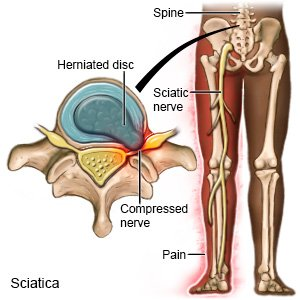
Sciatica symptoms
When your sciatic nerve gets compressed or irritated, it can cause the following symptoms [6]:
- Pain in your lower back, which often radiates down one leg where it can cause sciatic knee pain
- Shooting pain in one leg or buttock
- Tingling, numbness, or altered sensitivity to heat in the affected parts of your body
- In some cases, weakness in your affected leg and difficulty walking
Is walking good for sciatica?

Research has contradictory findings when it comes to the role of recreational walking in relation to the onset of sciatica. While some scientists found it to be a factor which reduces the risk of developing this condition [7] a study conducted on 2077 forest industry workers revealed that regular walking almost doubled the incidence of sciatica [8].
This suggests that the amount of time spent walking can influence its effect on your spine. While taking a short, slow walk can keep you mobile and release endorphins, spending long periods on your feet can put significant pressure on your spine, compressing its discs and increasing the chances of an adverse event such as a herniation which would trap the sciatic nerve.
So far, no specific studies have been conducted on the effect of walking on sciatica. However, there are a few clinical trials which tested this in patients with lower back pain or with conditions which can cause sciatica, such as a narrowing of the spinal canal (lumbar stenosis) or a slipped disc.
The available research shows that walking may be more effective than getting no treatment in improving lower back pain, disability and quality of life [9] and that its effects are comparable to those of other forms of exercising [10][11], such as cycling. However, researchers point out that more research is needed to get strong evidence regarding the effect of walking on low back pain [12].
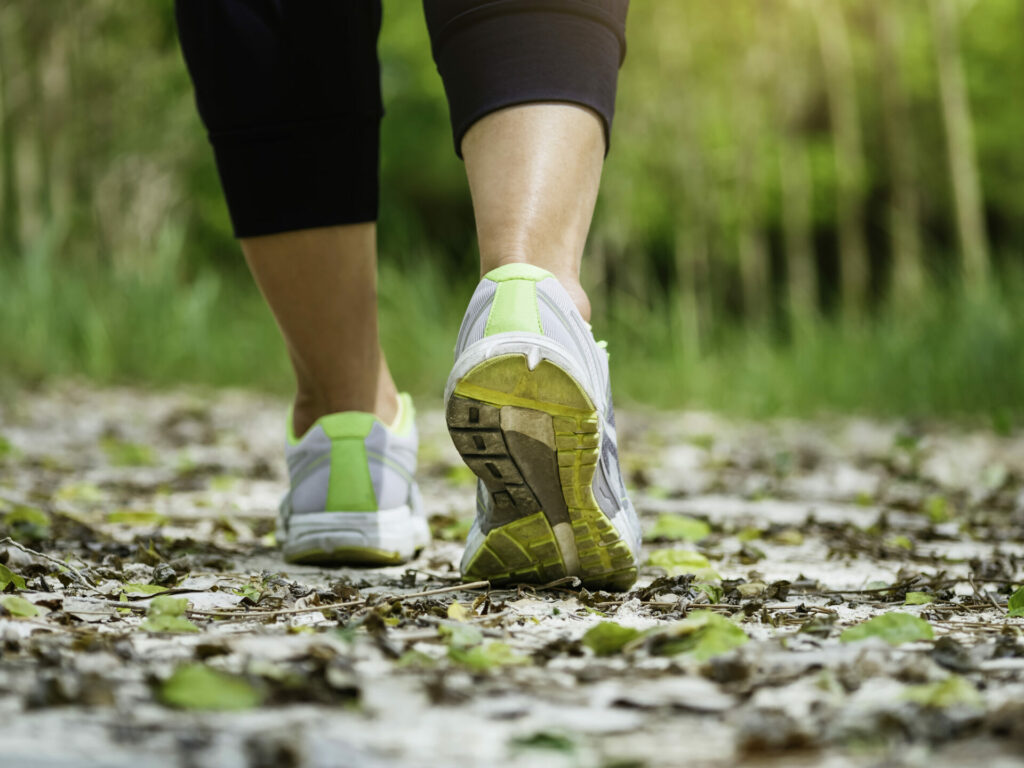
The NHS [13], as well as certain studies [14], recommends walking as a form of pain management, among other forms of exercise, such as gym or swimming. And some authors point out that it is a safe type of activity, with low risk of back injury, which can also be performed by previously sedentary patients [11].
However, whether walking is good for your sciatica depends on the root issue that caused it. Certain spinal issues, such as a narrowing of the spinal canal, can manifest with difficulty walking and increased levels of pain when engaging in this activity [15][16]. Furthermore, simply standing and moving can place additional pressure on your spine, making the sciatica pain worse for some patients.
The bottom line is that if you feel comfortable walking and your pain levels allow it, it can help to do so. It keeps you mobile, prevents blood clots from forming in your legs from laying down too much and releases endorphins which can lower your pain levels [17]. However, make sure you do this in moderation and stop if you are experiencing an increase in pain.
Tips for walking more comfortably with sciatica
Here are some things you can do to make your strolls more comfortable when you are experiencing sciatica:
Stretching
Do some light stretching before waking – warming up your hamstrings with gentle exercises can make walking easier and ease discomfort.
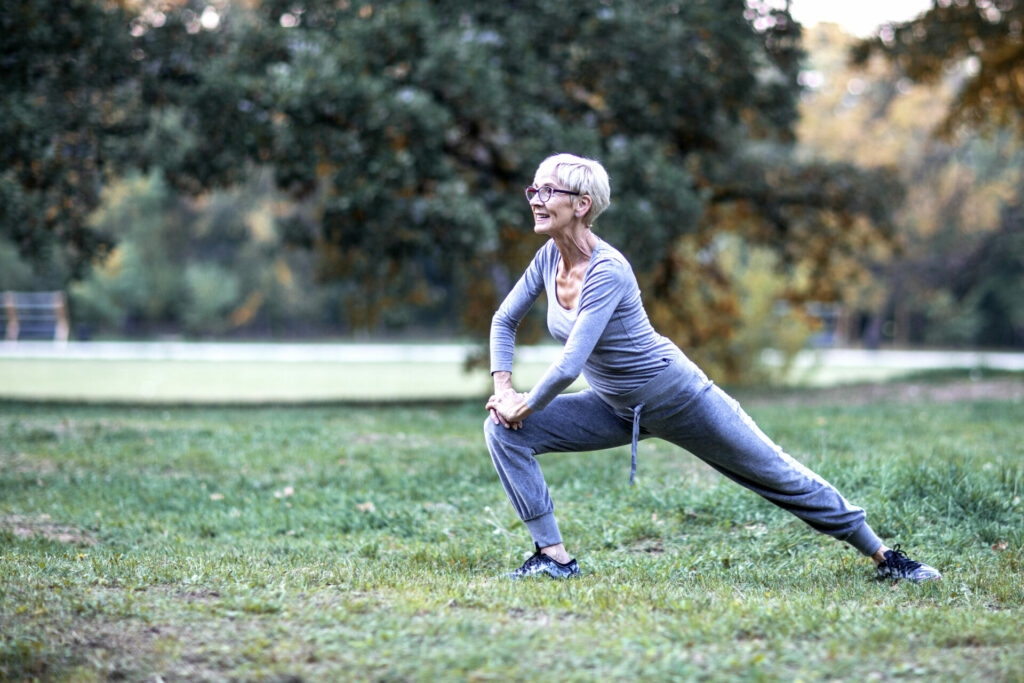
Footwear
Use comfortable shoes – using orthopaedic shoes can make walking easier for you than regular ones, with hard soles. Avoid high heels completely, as they force your legs and spine into an unnatural position.
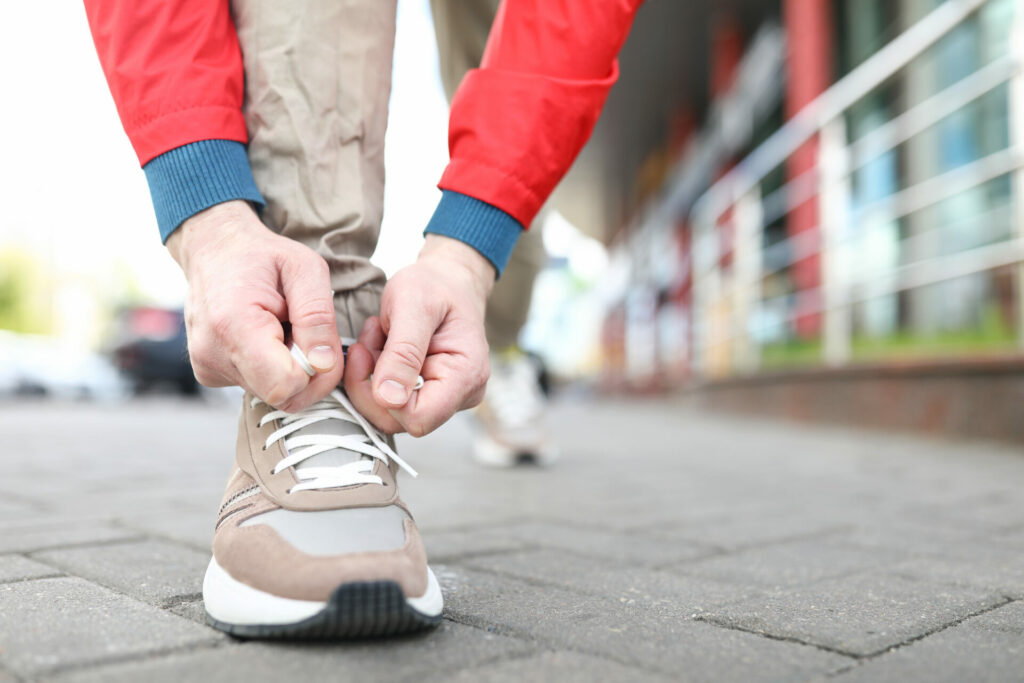
Correct your walking posture
Try to walk with your back straight and head up, without slouching or leaning to the sides. Keep your pelvis aligned with your shoulders and avoid tilting it inward or outward when walking.

Walk on a soft, flat surface
Stepping on hard pavement or walking on a slope can produce small shocks which are absorbed by your legs and spine, causing pain.
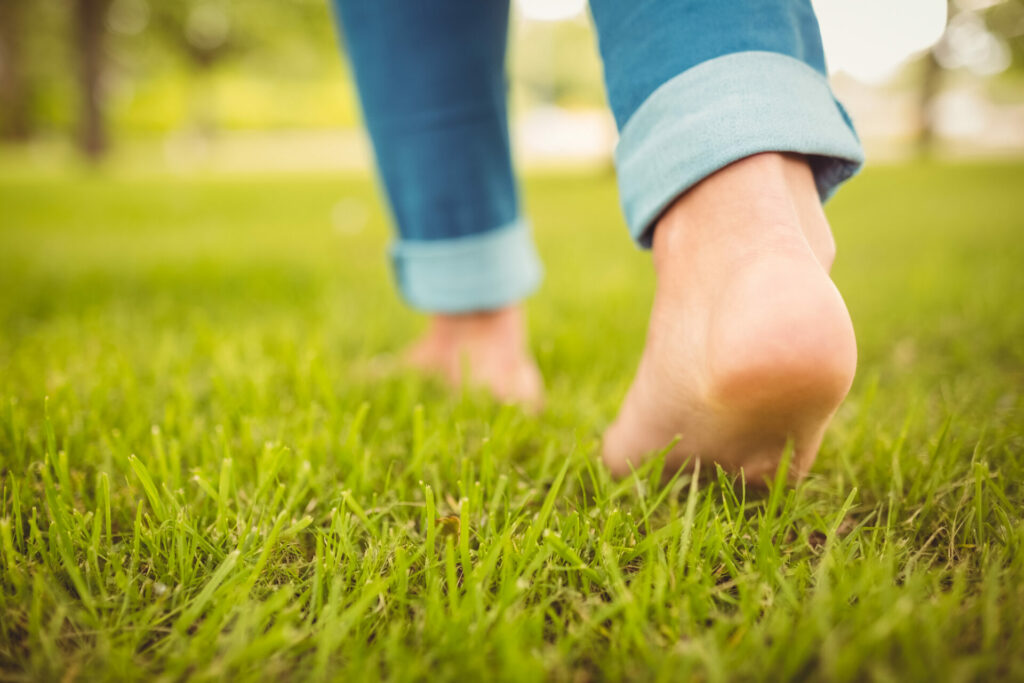
Take short, slow walks
Avoid overexerting yourself when walking with sciatica, so you don’t worsen your symptoms. You can increase the duration and pace of your stroll as you start seeing signs your sciatica is improving.
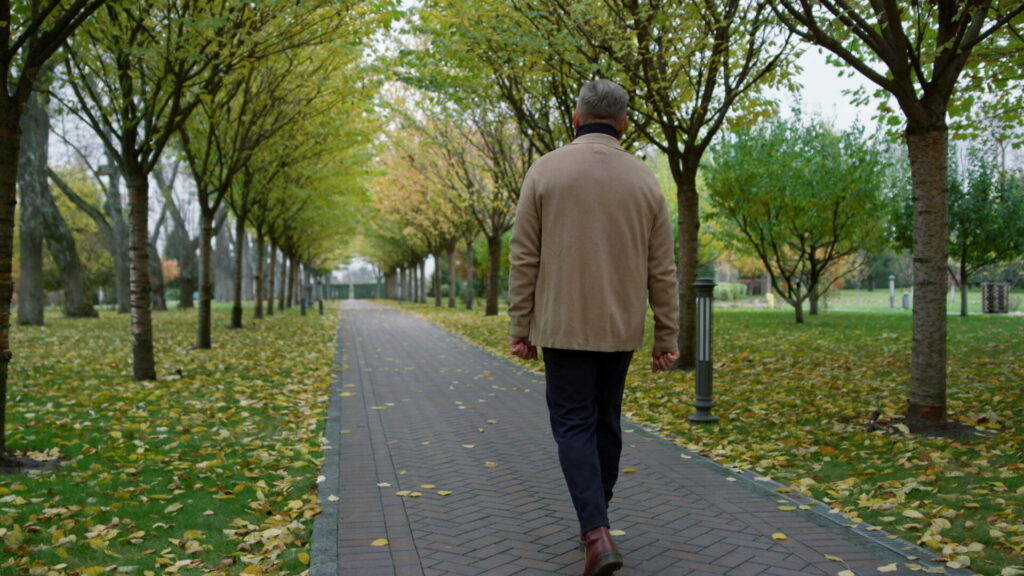
Get a walking buddy
Asking a friend or family member to walk with you can provide you with company that can take your mind off the pain, as well as with physical support if you should suddenly feel the need for it.

When to avoid walking with sciatica
While a slow, short walk is normally considered beneficial, there are some circumstances under which you are better off resting and putting off exercise until you feel better:
- If your sciatica pain is very intense – if you are in the first days of a sciatica flare and are experiencing significant amounts of pain, it can be painful simply to stand, let alone to walk. If this is your case, don’t force yourself to get mobile just yet, get some rest and use alternative methods of alleviating your pain, such as hot or cold compresses until the pain starts to subside.
- If you are experiencing significant leg tingling or numbness – trying to walk on a numb leg can lead to injury, so it is best to avoid this. If these symptoms are very pronounced or suddenly get worse, it is a good idea to see a healthcare provider.
- If you have difficulties walking – a heavy feeling in your leg or the sensation that you are dragging it when waking is a sign you shouldn’t force yourself to do so. Walking with an offset balance should also be avoided, as it can also lead to injury. If these symptoms persist, it is a good idea to have them checked out by a healthcare provider.
- If you can no longer control your bladder or bowel – do not try to walk and call emergency services immediately if you notice numbness around your genital or anal area and/or if you suddenly become unable to control your urination or bowel movements.
- If you are experiencing other physical symptoms – if alongside your sciatica pain, you are also experiencing fever, nausea, vomiting, abdominal pain, headaches or dizziness, it is best to rest. If these symptoms persist or recur, contact your healthcare provider. Should they suddenly become severe, call emergency services immediately.
Exercise alternatives to walking with sciatica
If you would like to get some exercise to relieve your sciatica pain but walking does not appeal to you, here are some alternatives you can try:
- Yoga – doing some simple yoga poses, such as the cat-cow pose or the pigeon pose can help you get immediate relief for sciatica pain for a short time and increase your mobility and overall state of mind.
- Tai chi – this is a slow, gentle form of martial arts which involves both the body and the mind. It is relaxing, doesn’t overexert you and can help strengthen your muscles, improve your balance, ease your pain and increase your general sense of wellbeing [18].
- Pilates – easy Pilates exercises, such as the bridge, hamstring and hip flexor stretches or opposite arm and leg stretches, can help decompress your spine and ease your sciatica pain.
- Swimming – swimming is good for sciatica pain because it takes pressure off your spine, which no longer needs to support your entire body weight. It is especially recommended for sciatica in pregnancy, as it can help mothers-to-be move with more ease and also carries other physical and psychological benefits for their wellbeing [19].
- Light jogging – if you feel up for going for a short run, it is alright to do so. Just be sure to take it slowly and not venture too far, so you don’t overexert your leg and spine.
- Light aerobics – exercise is often more fun in a group setting, so you may feel more inclined to join a beginner aerobics class. Just remember to take it slowly, take breaks as needed and avoid performing exercises which cause you pain or put strain on your lower back.
- Light cycling – If your pain levels allow it, going for a short, gentle bicycle ride can be refreshing and help you decompress. However, avoid riding too fast or on sloped terrain, so you don’t overexert yourself.
Other efficient remedies for sciatica pain:
If your pain levels are too high to allow you to exercise comfortably, there are other treatments available that can help relieve your sciatica. Here are some of the most efficient:
Home care
There are many things you can try at home to make yourself more comfortable and get some sciatica pain relief:
- Getting a relaxing massage — Massage therapy is known to reduce sciatica pain [20][21]. All you need to do is ask someone else to apply these simple massage techniques for sciatica relief.
- Applying hot or cold compresses — Research has found that both hot and cold compresses can reduce the amount of pain and inflammation caused by a slipped disc (although heat seems to be more effective) [22].
- Allowing your body to rest — It is a good idea to get enough rest throughout the day [23], since standing or sitting for prolonged amounts of time can increase your pain [24].
- Getting acupuncture — Acupuncture for sciatica can be performed by a licensed professional in your home if needed and has been shown to be as effective as some pain medication [25].
- Make some lifestyle changes — While you may think that it’s too late to make lifestyle changes after you have already started to experience sciatica, this is not the case. There are several things you can do to improve your pain levels and make an easier recovery, such as sleeping on your back on a medium-firm mattress [26], quitting smoking [27], or trying a short term low-calorie diet [28].
Medical treatments
If home care is not sufficient to relieve your sciatica, or if your symptoms worsen instead of improving, it is time to see a healthcare provider. If you are concerned that the NHS can’t help with your lower back pain as soon as you need it, you can always book an appointment with the experienced back and spine specialists at the Harley Street Specialist Hospital.
They will use state-of-the-art diagnostic imaging tools to identify the root cause of your sciatica and then recommend the most efficient personalised treatment, such as:
- Pain medication – a physician can prescribe you corticosteroids or anticonvulsants for your sciatica pain [30].
- Injections for back pain – there are several effective types of injections for back pain, such as lumbar epidural steroid injections [31].
- Spinal manipulation – Chiropractic manipulations of the spine have been found to be effective in the treatment of sciatica produced by a herniated disc [32] [33].
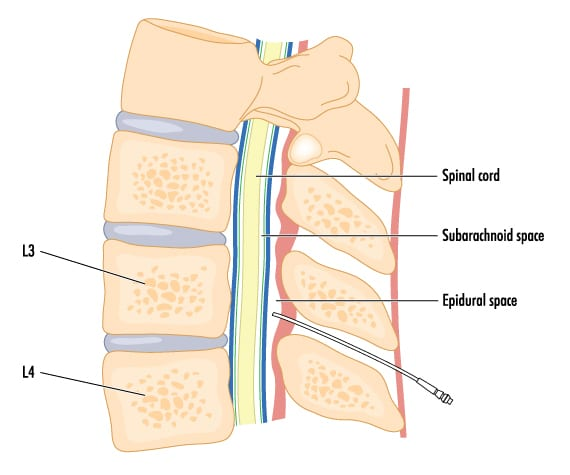
- Spinal surgery – If your sciatica symptoms persist past 6-8 weeks with no improvement, or they suddenly take a turn for the worse, surgery has been found to potentially provide pain relief in the short term than conventional treatment[1].
Whatever treatment you may need, you can be sure that at the Harley Street Specialist Hospital, you will be in good hands on your journey to curing your sciatica permanently.
Read more about what a hospital can do for your sciatica pain.




